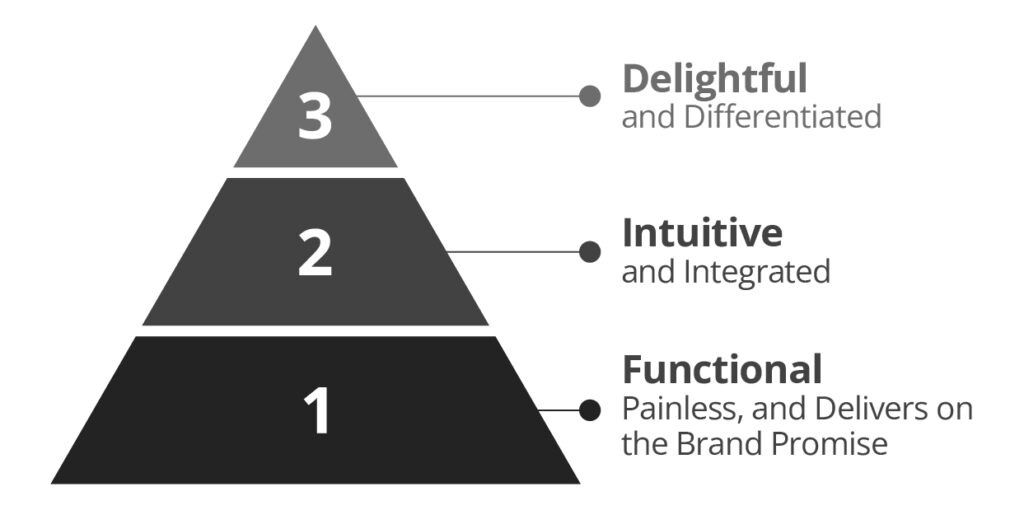
The last few years have been defined by rapid technological advancement, intense competition, and rising consumer expectations, putting businesses under constant pressure to adapt. Adding to that an uncertain economic outlook, increased price-consciousness among consumers, and the commoditization of entire categories, what emerges is a challenging landscape for many companies in 2025 and beyond.
Despite these headwinds, there is still opportunity for companies to create sustainable competitive advantage and grow. In Level5’s experience, organizations who are more customer-centric are best positioned to succeed. But how do companies become more customer-centric? And how are CX leaders planning and prioritizing for the future?
“You have to plan for, and invest in, the future, especially in the face of uncertainty. Those companies who don’t invest in customer experience are going to be left behind by those who do.”
Through exclusive, in-depth conversations with CX experts across industries, Level5 sought answers to the following key questions, which will be addressed throughout this series:
- What does excellence in customer experience mean in 2025?
- How is the role of a CX leader evolving inside organizations?
- What are CX leaders’ top priorities and concerns for 2025?
- What are common barriers when implementing CX initiatives, and how can leaders overcome them?
- What trends do CX leaders have their eye on in 2025 and beyond?
- Where are CX leaders are seeing high returns on investment?
Defining Exceptional Customer Experience in 2025
Leaders are reimagining what truly exceptional customer experience means—moving far beyond traditional transactional interactions to create holistic, meaningful connections. Through our discussions, a compelling framework of customer experience has crystallized: a strategic approach that can be understood as a “Hierarchy of Customer Needs”.
Key to understanding this framework is recognizing that CX leaders think about customer experience holistically. Customer experience is about much more than a digital purchase journey, an interaction with a front-line employee, or resolving a support ticket; it’s the entire end-to-end relationship a customer has with a brand. CX leaders know that every touchpoint is an opportunity to either enhance or erode a customer’s relationship with the brand.
The Hierarchy of Customer Needs Framework:
Tier One: Functional, Painless, and Delivers on the Brand Promise

First and foremost, the brand’s products or service must meet the customer’s needs. The purchase experience is expected to be easy and have few or no pain points. Although this is the “foundational” level, it is also the most critical – as this is where the product or service must live up to the brand promise. Delivering on the brand promise is a moment of truth – failure to meet expectations could lose a customer forever. CX leaders consistently reinforced the importance of ensuring the brand’s foundations are solid before adding complexity.
Functional elements include:
- Customer wants and needs are deeply understood
- Brand strategy and brand promise are aligned to marketing communications
- The product/service meets customer needs and can deliver on the brand promise
- Purchase journeys and customer support experience have been thought-through and can be consistently executed
Examples of functional initiatives CX executives are working on in 2025 include:
- Speaking directly to customers to gather feedback on their goals, priorities, and concerns to be a better partner and serve their needs more effectively
- Improving the readability and simplicity of all written communications and information a customer interacts with (e.g., website information, contracts, forms)
- Empowering customer support agents to solve customer problems without requiring escalation
Tier Two: Intuitive and Integrated
The next tier demands a frictionless journey, where interactions are smooth, intuitive, and effortless.
One leader described it as a connected experience, which involves “ensuring all touchpoints, whether physical or digital, are connected, consistent and seamless. This means marketing campaigns, digital touchpoints, in-app, and in-person experiences must all be delivered to the same high standard.”
A connected experience requires operational and technological sophistication. A CX leader can add value here by providing the end-to-end customer view and working collaboratively with various functional teams to ensure the desired consistency and seamlessness of experience is achieved.
The second level in the hierarchy recognizes that after meeting customer needs and delivering on the brand promise, companies can start to design experiences that feel natural and intuitive by understanding signals of intent and helping customers achieve the outcomes they desire.
Since reducing friction facilitates purchase, usage, and increases loyalty, these actions provide the dual benefit of improving both the customer journey and business outcomes. The ability to connect investments in CX to improvements in business metrics is crucially important for CX leaders to build confidence and trust with key stakeholders across the business.
Tier Three: Delightful and Differentiated
The top level of this hierarchy is the most challenging yet transformative level. It involves designing delightful, differentiated experiences that not only meet but dramatically exceed customer expectations.
Although the specifics about how to create delightful, differentiated experiences varies according to industry and business model, it is clear CX leaders are focusing their energy on improving the moments that matter most to their customers. Using Voice of Customer data (e.g., NPS, CSAT, usage data) enriched with qualitative customer feedback to map journeys to a high level of detail, these leaders are synthesizing data and developing a deep understanding of their customers. Those insights are then shared with other functions across the business to co-design new experiences at those most important moments.
Another theme across industries was a focus on personalization. One leader shared, “Only when an experience feels personalized can it have the potential to be delightful.” Many CX leaders agreed that designing personalized experiences provides businesses with the opportunity to create an emotional connection with their customers, building trust and long-time loyalty. Another leader echoed a similar comment with an interesting nuance, “I think we occasionally focus too much on scalability, but sometimes you have to do things that don’t scale. In my years of experience, I’ve found that taking the time to create a one-to-one experience can go a long way.” And while one-to-one experiences don’t scale, it can be a useful tool to turn a dissatisfied customer who’s about to churn into a loyal promoter, helping them to feel like their concerns have been heard and understood.
When thinking about how to deliver consistently great experiences that do scale, a CX leader in the retail sector highlighted the importance of maintaining a dual focus on the employee experience as well as the customer experience. With the understanding that “Excellence in CX for us needs to include excellence in team empowerment and training – equipping the people who will be delivering the service with the best skills and tools to deliver a great customer experience. In my mind, high ENPS drives high CSAT and Customer NPS.” Several of the leaders interviewed also mentioned talent and training as critical to delivering outstanding customer experiences.
Conclusion
The insights in this article were derived from interviews with CX leaders across a diverse group of industries. The framework that has emerged through these discussions can be a useful tool for how to think about delivering excellence in customer experience and ensuring the foundational elements are in place before adding complexity. Each tier builds on the previous one and highlights how delivering delightful and differentiated experiences is best achieved by first ensuring that companies know their customers and brand promise, then consistently deliver that promise with their products and services. Delivering an AI-enabled, personalized omni-channel shopping experience is a waste of effort if the product is consistently defective and doesn’t meet a customer’s basic functional needs.
As one CX leader articulated, “True excellence means creating a seamless ecosystem where physical and digital interactions flow naturally, providing value not just to customers, but to all stakeholders involved. Whether it’s a fan engaging with an event, a customer navigating a digital platform, or a corporate partner seeking meaningful engagement, exceptional experiences are those that are intentionally designed to deliver confidence, build trust, and make things easy. They must be fundamentally human-centric. The aspiration is no longer simply to satisfy, but to create moments of unexpected joy that transform routine interactions into memorable, meaningful connections.”
This nuanced understanding of exceptional customer experience was shared by each of these leaders, whose role inside their organization is, increasingly, to communicate this knowledge and share this understanding with their peers in other functions. We will continue to explore the evolution of the role of a CX leader along with other topics in the rest of this series.
To follow Level5’s CX Leader Insights series, subscribe to our newsletter to receive these articles directly to your inbox.
To learn more about Level5’s customer experience offering, check out the Experience section of our website, or contact Joseph Smith at jsmith@level5strategy.com.
Methodology Note:
Industries covered by these interviews include Technology, Financial Services, Insurance, Retail/Fashion, Sports, Telecommunications, and Professional Services.
Thank you to the CX Leaders who contributed to this article series.
Special thanks to the following contributors:
- Cadence Peckham
- Kristy Mohun – Director, Customer Experience, Mejuri
- MD Klein – Co-Founder, The Marketing Perspective
- Rick Snook – Director, Customer Experience, Miovision
- Veronica Hernandez – Journey Manager & Experience Design, TELUS
- Winnie Chung – Director, Digital Platforms and CX, Tennis Canada



